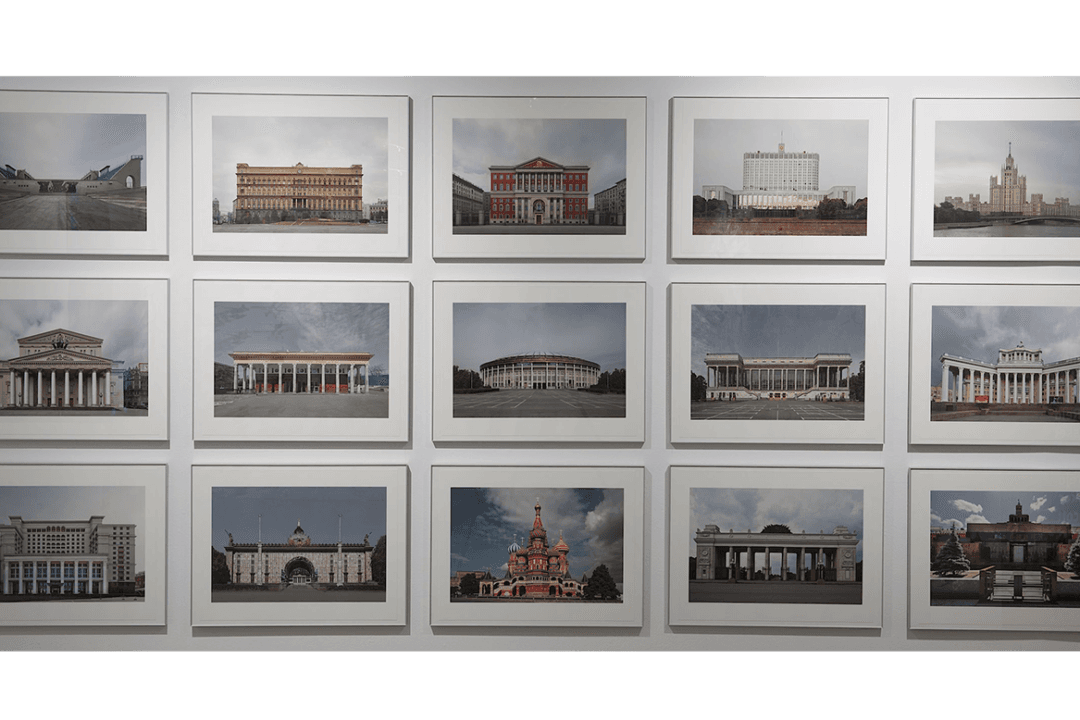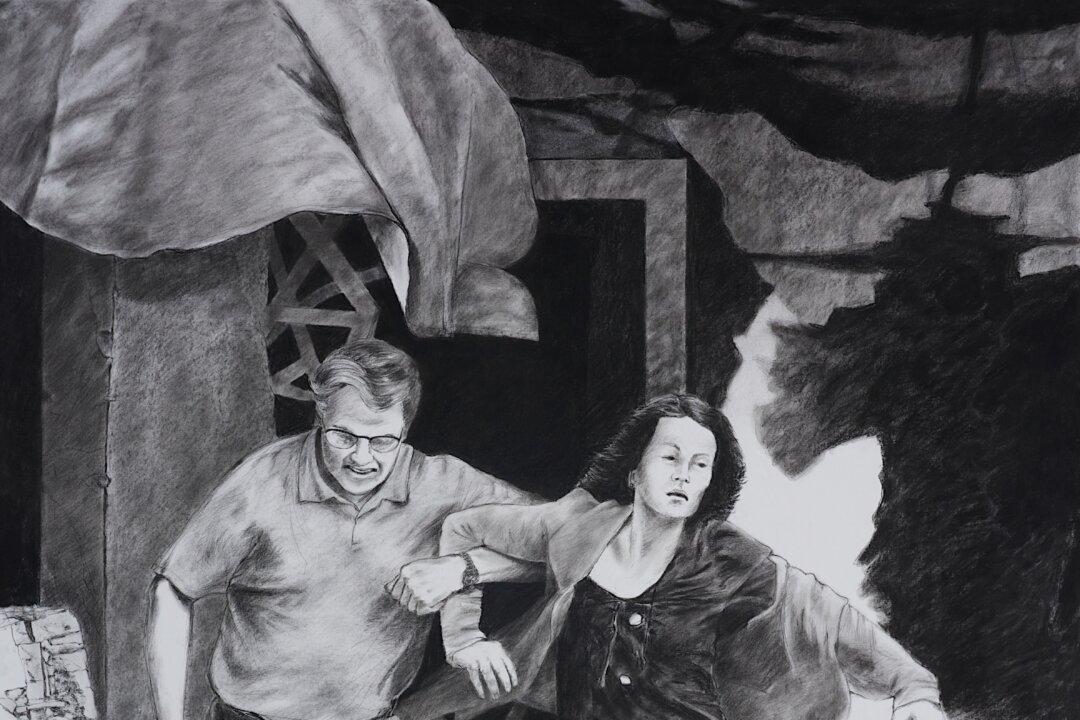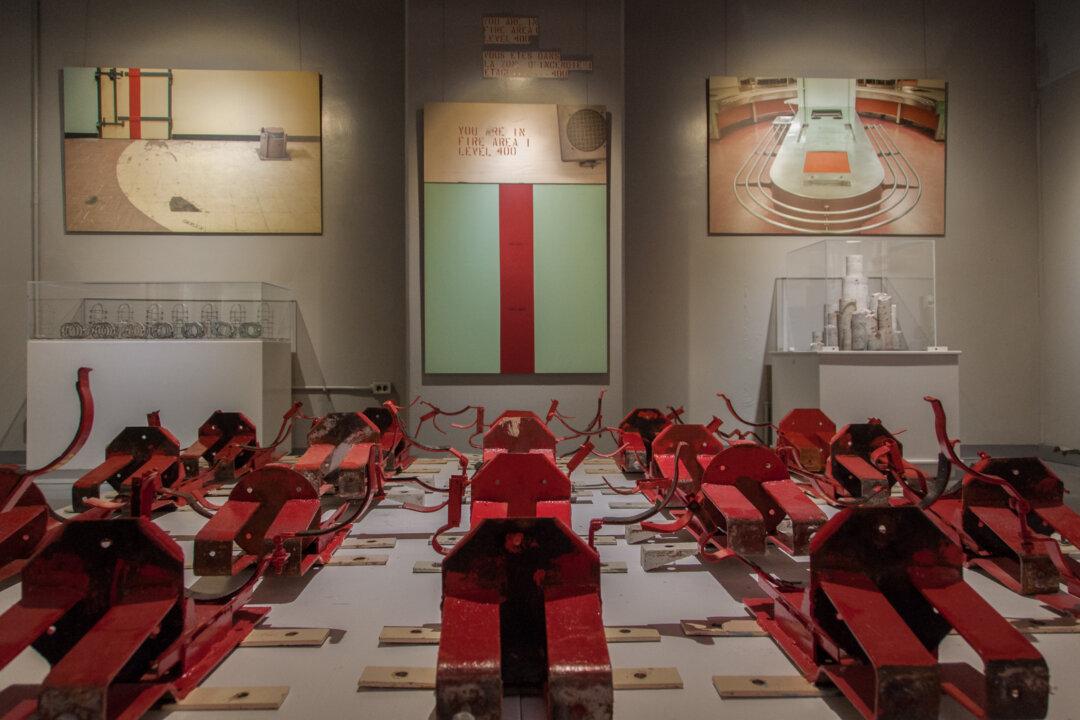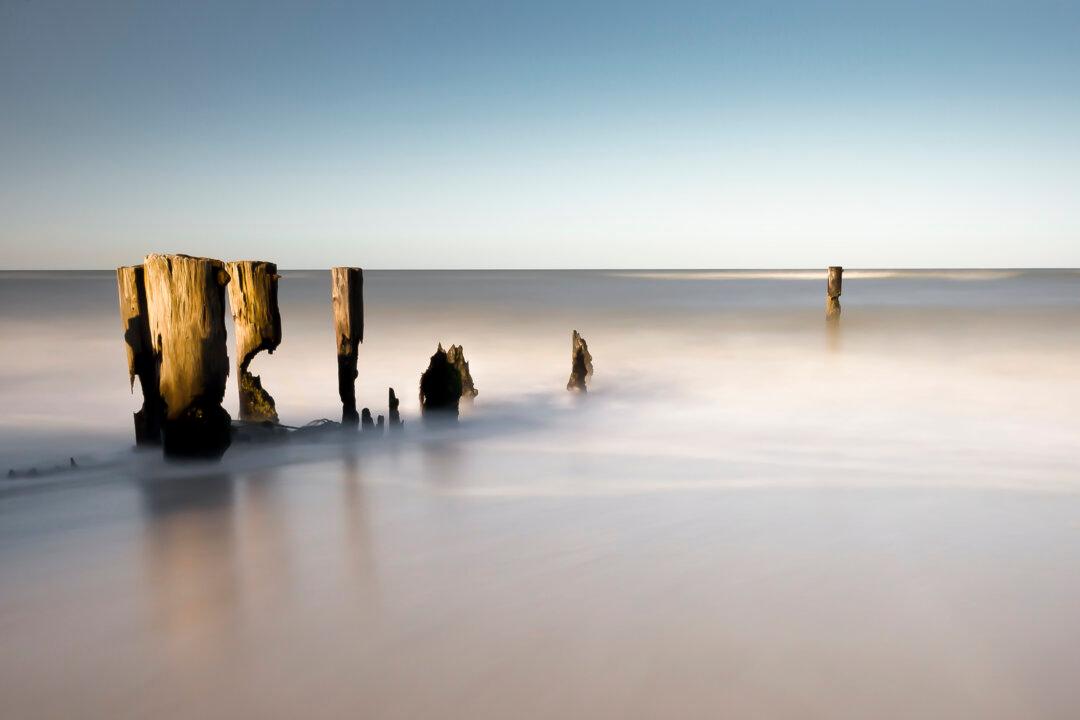Gusts of wind, tumbling leaves, and dropping temperatures tell us, in the words of Bob Dylan, “the times, they are a‘changin.’” Summer gives way to autumn, stray thoughts of other times and places fly past, too. We see this sensibility in three current Ottawa exhibitions.
“Big Bang” at SAW Gallery, an artists-run centre in Ottawa, is a large exhibition showcasing the work of 14 artists of the Ottawa-Gatineau region. Its curator is Jason St.-Laurent, SAW’s director.
In the work of several of the 14 artists, the imagery has been based on distance, even of matters not to be questioned. “The Moscow Photographs: Stalin’s Architectural Legacy, 1922-2012” by Leslie Hossack, for example, is a suite of 15 architectural photographs. Each of the 15 structures photographed stands on cleared, level ground. Hossack’s three rows of photographs, seen in sequence, are documents of buildings erected rigorously, imposed on the land. Their structures demonstrate a rule of mind over matter, intellect over emotion.
Among the sites Hossack photographed in Moscow are Lenin’s tomb, constructed 1929-30; an entrance to Gorky Park, built 1955; the Ukraine Pavilion, constructed 1938-39; and the 16th-century St.Basil’s Cathedral.
Justin Wonnacott’s five photographs are also disquieting images of disconnect and distance. There are no people, houses, birds, or animals to be seen, and no indication where the photographs were taken. We see only a bit of detritus at the side of an empty road, or the sand of a quiet seashore.





